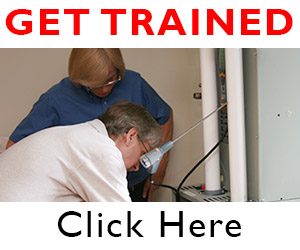A frequently asked question we get at National Comfort Institute (NCI) is, “What skills do we need to optimize a duct system the right way?” To shed some light on this question, here’s an overview of five essential skills I believe you need.
As you read, you’ll notice not all the skills listed are technical. While in no specific order, both technical and non-technical skills play an equal role in Duct Optimization™.
Unless you account for these skills, your chances of success diminish.

Purchase Test Instruments and Accessories
Duct Optimization is based on measurements, not assumptions and guesses. So, before you can optimize a duct system, take an inventory of your test instruments.

balancing hood works. This is
one of the essential tools
necessary for you to do duct
system optimization work.
It’s likely you already own some or all of the items you need. Some are more expensive than others and require an investment. The items you need are:
- A static pressure test kit
- Digital psychrometer probes
- Digital TrueFlow® Grid
- Anemometer (hot-wire and/or rotating vane)
- Air balancing hood
- Report options (to capture results).
If you’re unsure where to begin, start with a static pressure kit and get comfortable with it before making a big investment.
Master Airside Testing and Diagnostics
Before any testing begins, you need to gather basic system information, perform a visual inspection, and install test ports. If you haven’t yet mastered these skills, start now.
Everything from this point depends on correctly performing these tasks. There’s no reason to delay with apps like measureQuick® that simplify the process.
Static pressure measurement is the first airside testing skill you need to know how to perform. Start with total external static pressure (TESP) since it indicates overall system health.
Additional pressure measurements, such as filter pressure drop, coil pressure drop, and duct pressures identify restrictive duct system component(s). The highest measured pressures are where you want to focus your attention.
Click Below for the Next Page:













Recent Comments